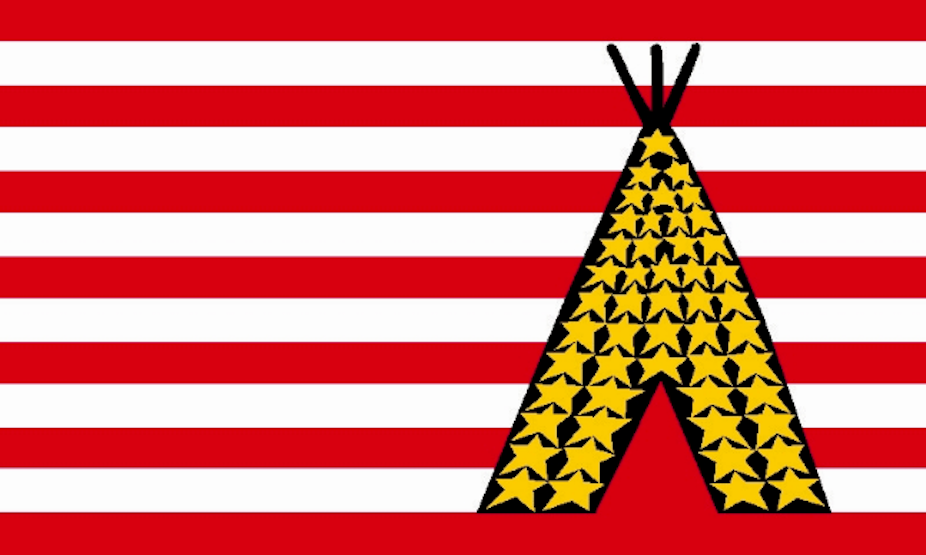In the thick of 1968’s seismic social upheavals, Native Americans also reached for their rights, and activists renewed their campaign for recognition and status as fully sovereign nations.
The late Martin Luther King’s Poor People’s Campaign featured several caravans that collected Indian activists before converging on Washington DC. In May and June 1968, Native American delegates lobbied US officials and castigated federal Indian policy in the press, explaining that American Indians did not want civil rights – they wanted their own collective rights of sovereignty:
We make it unequivocally and crystal clear that Indian people have the right to separate and equal communities within the American system – our own communities that are institutionally and politically separate, socially equal and secure within the American system.
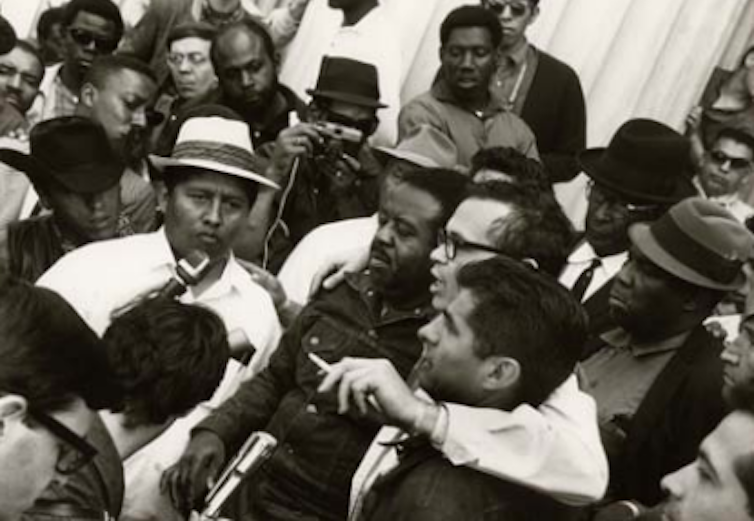
Renewing the struggle
These demands were just the opening salvo in a renewed struggle for Native rights. In the capital, activists of the National Indian Youth Council criticised the US Department of the Interior for denying Native nations the running of their own education. In 1969, a group calling themselves Indians of All Tribes occupied Alcatraz – the former prison island in San Francisco bay – demanding that it be granted to them as a place for an Indian university and a cultural centre.
In August 1968, young Native activists founded the American Indian Movement (AIM) to combat police “overreach” and discrimination in big cities, where Indians had moved under federal relocation programmes since the 1950s.
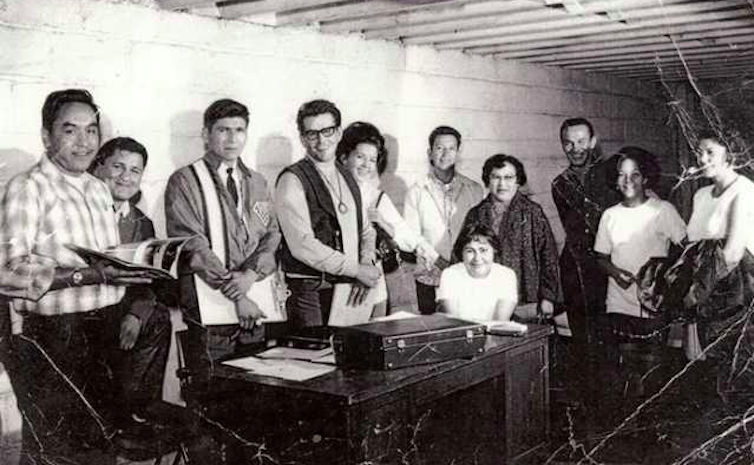
In the early 1970s, the emergent Native rights movement built alliances with traditional communities and shifted the struggle to injustice in reservation border towns and the Bureau of Indian Affairs – the government agency that had controlled Indian life for 150 years. In this phase, sovereignty meant legal protection against racism, more resources, and a greater role in local policy and decision making.
In 1974, the newly formed Women of all Red Nations put on the movement’s agenda the fight against involuntary sterilisation and resistance to the forced enrolment of Native children in white-run boarding schools.
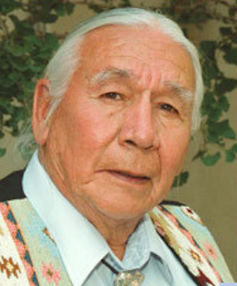
Ambitious vision
American Indian activists were truly radical in their aims for community control and a Native land base. In November 1972 their Trail of Broken Treaties protest in Washington DC issued a 20-Point Position Paper that called for the abolition of the Bureau of Indian Affairs.
Marchers also demanded the restoration of a 110m-acre Native land base by the US federal government by 1976. When they occupied the village of Wounded Knee on the Pine Ridge Lakota Sioux Reservation in February 1973, the AIM and their local allies demanded that the government reinstate the 1868 Fort Laramie Treaty, which had granted to the Sioux Nation much of the territories of the current states of Montana, Wyoming, North and South Dakota and Nebraska.
The strategies of the sovereignty movement matched their goals in radicalism. The desperation of Native activists drove them to armed confrontations, and their brinkmanship was met with waves of government repression. These years saw firefights, loss of life on both sides, court trials, prison, paranoia and terror, leaving many with painful memories.
Reaching for freedom
But soon even more radical ideas of sovereignty emerged from the new Native rights movement: the AIM wanted nothing less than full independence from the United States. At its founding conference on the Standing Rock Sioux Reservation in 1974, the International Indian Treaty Council issued its Declaration of Continuing Independence for “Indian Country”. Veteran activist Roxanne Dunbar-Ortiz recalled that in the following years:
internal discussions among activists revolved around the question of self-determination, generally called “sovereignty”. Clearly, the already existing model of independent nations emerging from colonialism did not neatly fit the situations of Indian peoples in the Americas.
Smaller countries had already gained United Nations membership – and the territory of the Navajo was larger than most of them. The activists’ ideal future would see the US dotted with vast territories of restored Native autonomy, ranging from conventional reservations to fully independent American Indian countries, likely combining into a larger entity of Native America.
Aiming for decolonisation into full independence, the International Indian Treaty Council began lobbying the UN for membership for Native American nations. The odds were strongly against them. When activists asked the UN for reparation for Wounded Knee, the then secretary general, former Austrian president Kurt Waldheim explained that the world body could not “interfere in matters of domestic jurisdiction of member states and cannot deal with those who contend they are nations within nations”.
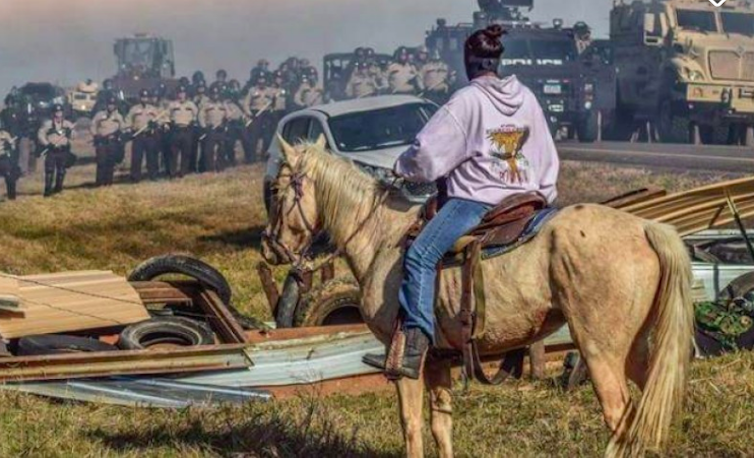
Protecting the legacies
The UN’s committee on decolonisation remained closed to the radical Native American sovereignty movement. Instead, American Indian activists used international solidarity and then US president Jimmy Carter’s new foreign policy doctrine to gain membership as an advocate for indigenous human rights. In 1977 the International Indian Treaty Council entered the UN’s Economic and Social Council. Since then, alongside other organisations, they have monitored, evaluated and commented on government treatment of Indigenous peoples around the world.
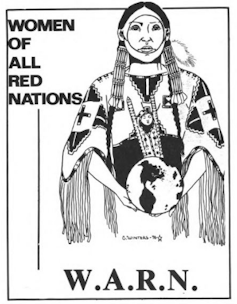
While American Indians did not achieve the radical goals of their long, hard-fought 1968 campaigns, their work at home and abroad successfully pressured the US government to legislate Native American sovereignty rights and address tribal control over areas such as education, health, business, policing, religion and land.
But these rights are only as strong as their enforcement and the respect they are accorded by those in power. Not only did Donald Trump authorise the construction of the Dakota Access Pipeline (DAPL) through Standing Rock Reservation, now he plans to erode Native sovereignty rights in health care. In their ongoing struggle, Native Americans will need to call on the positive legacy and spirit of their radical counterparts of 1968.

